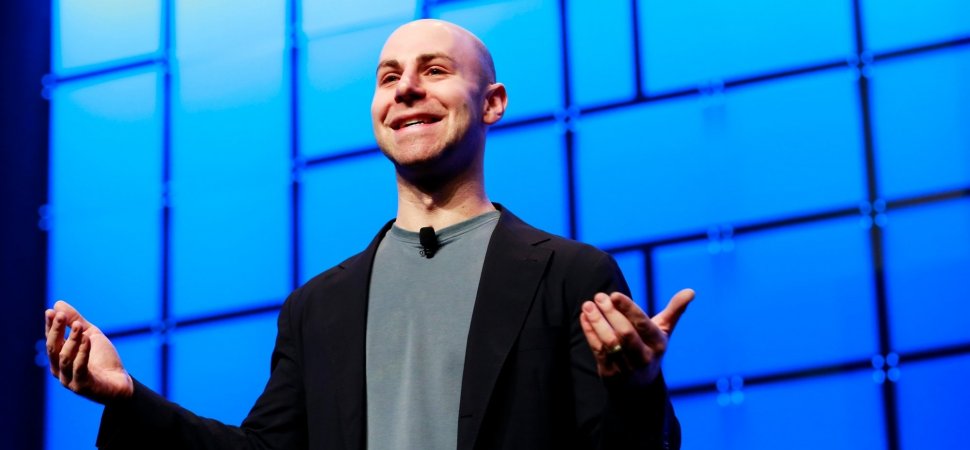Leadership is not mysterious. If you understand how people and organizations behave, you’ll have a pretty good idea how to maximize the performance of both. Fortunately, we’re sitting on about a century’s worth of research that reveals how leaders should manage, motivate, and develop employees, and how to improve their own decision making. There’s no good reason to get this stuff wrong.
Of course, people do get it wrong, though, which is one reason Adam Grant, a professor of management and psychology at the Wharton School and author of the bestsellers Give and Take and Originals, is in such high demand to consult with companies. Inc. asked Grant–who has personally been involved with more than 100 studies and experiments–to identify the most important leadership insights research has produced. Here are seven that he highlighted.
1. Beware the wisdom of crowds
With 50 years of research available, leaders should be familiar with the perils of groupthink. When people go along to get along, originality suffers, potential threats are brushed aside, and disastrous decisions result. More effective, Grant says, is a process called “brainwriting,” in which everyone generates ideas on his or her own. Only once everything is on the table does the group evaluate it. “The wisdom of crowds mostly comes when you put people in separate rooms and get their judgment independently,” he says.
2. Value intangibles
Leaders routinely overestimate the power of extrinsic motivation: things like money, titles, and perks. Intrinsic motivation–creating meaningful jobs and relationships–gets short shrift. That’s because extrinsic inputs are so much easier to measure and to correlate with outcomes. “When you shift someone from salary to incentive pay, it is easy to see an impact,” Grant says. By contrast, leaders can’t quantify employees’ response to the clear communication of how their jobs contribute to the company’s mission. “Leaders tend to miss how much those things matter,” he says.
3. Maximize productivity spillover
Leaders also underestimate the extent to which the people surrounding an employee affect his or her performance. Sure, talent determines success to some degree. But even superstars fall off their game when they change employers and don’t bring their teams with them. Research also shows that employees’ performance improves by an average of 10 percent if those sitting near them are replaced with more productive colleagues.
4. Forget cultural fit
Hiring like-minded employees can be unifying and motivating for a startup powered by the momentum of its first, disruptive idea. But a growing body of evidence questions that approach for scaling companies, says Grant. “Culture fit” becomes a proxy for non-boat-rockers whom everyone likes and feels comfortable around. That way, stagnation lies. Grant prefers “cultural contribution.” “Instead of asking, ‘Does this person fit our culture?'” he says, “we should be asking, ‘What is missing from our culture, and is this person going to enrich it?'”
5. Question your judgment
One thing research hasn’t nailed yet is how to improve leaders’ judgment of others’ characters. Most leaders believe that as they gain experience and rise in stature, their decisions about whom to hire and promote improve. In fact, “the higher you climb, the more compromised your judgment is,” says Grant. The more senior you become, the more subordinates try to curry favor, and the more difficult it is to ascertain whom you can actually trust.
6. When in doubt, test it out
In recent years, experiments have migrated from universities into companies, where they are typically deployed in product development and marketing. Grant wants to see them applied to people practices as well. For example, companies debating the merits of telework can audition the arrangement with different departments and under different conditions. Very small businesses might partner with others to evaluate more scenarios. “You say to employees, ‘To be perfectly honest, we do not have internal consensus about whether this is a good idea, and we want to find out,'” he says. “When you explain that, employees are a lot more motivated to make it work.”
7. Evidence-based living
Given Grant’s immersion in research, it seems logical that his personal decision-making is impeccable. Not so, he says. But matters improve during semesters when he is teaching. “Standing up there and repeating that information makes it more salient,” he says. “It’s also like I’m a hypocrite if I don’t follow my own advice.” So, for example, when Grant is hiring during a teaching semester, he remembers to list potential cognitive biases before an interview so he doesn’t succumb to them.
Also, when working with a research team, Grant will solicit everyone else’s input before speaking, to make sure others don’t simply agree with him. But he’s not sure that’s always the best solution. “Maybe I have a group of people who are less informed on the issue than I am, and I might be better off trusting my own judgment,” he says. “Maybe they will end up being too swayed by each other.”
Despite the uncertainty, Grant says, “I feel confident, on average, that I will make better choices if I follow the evidence.”












